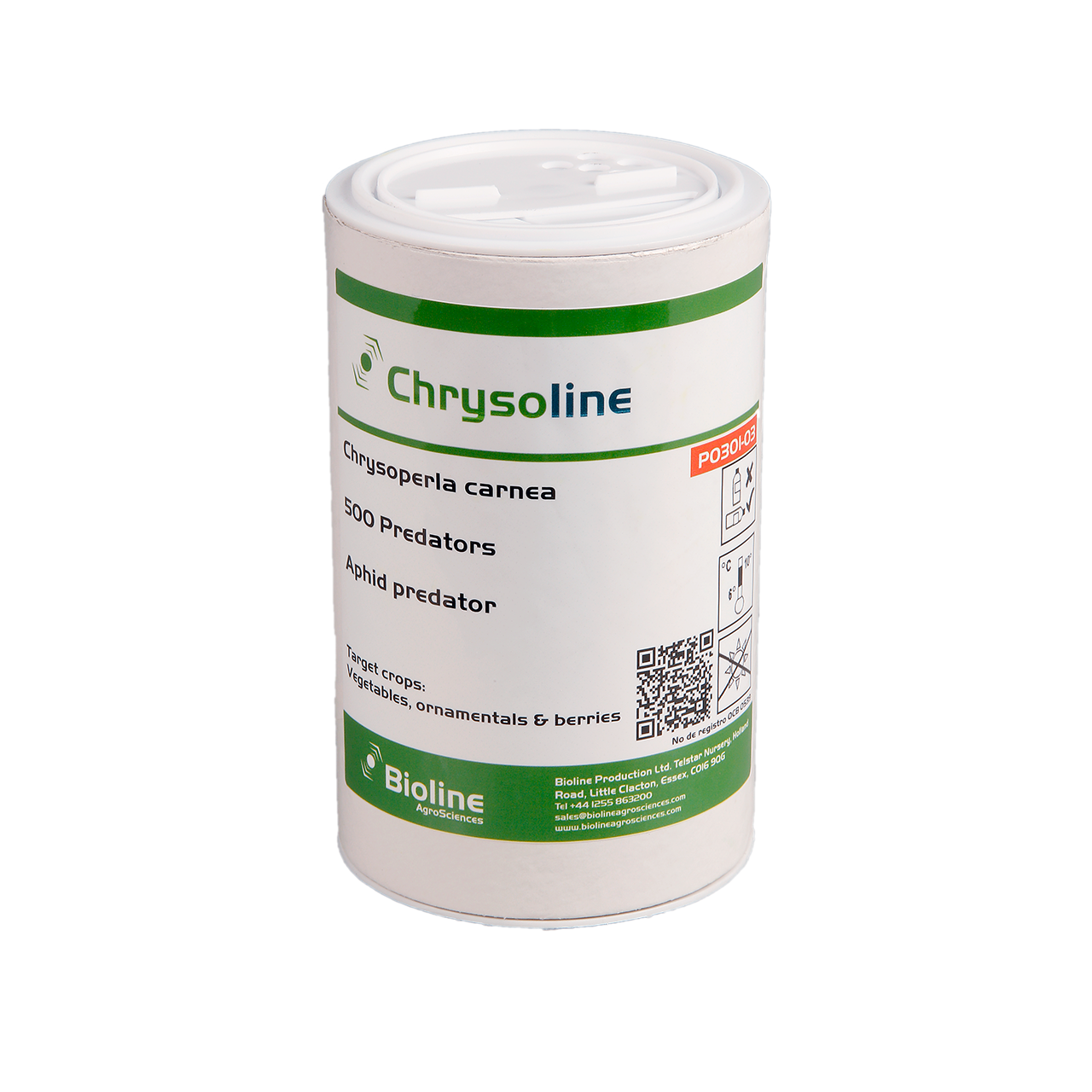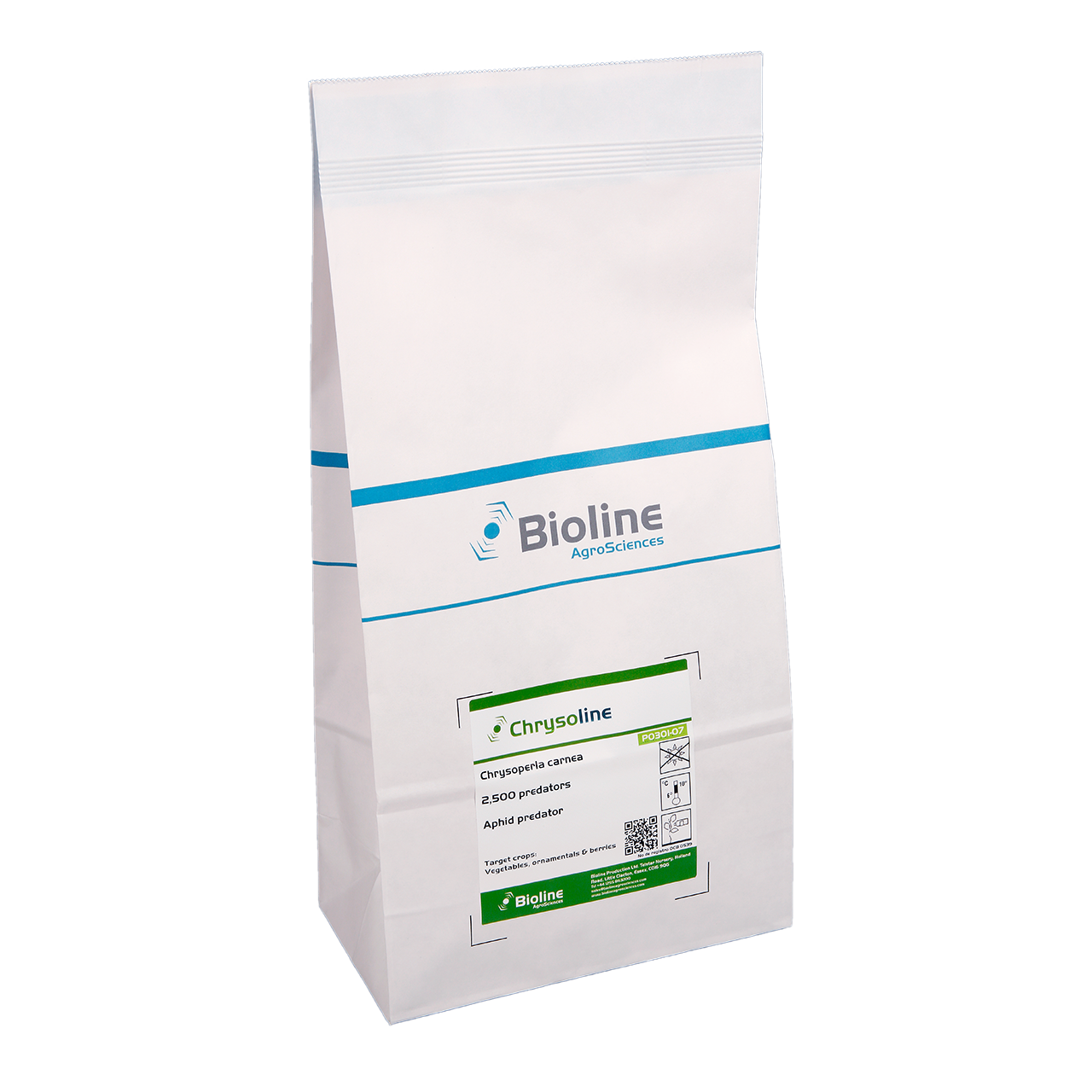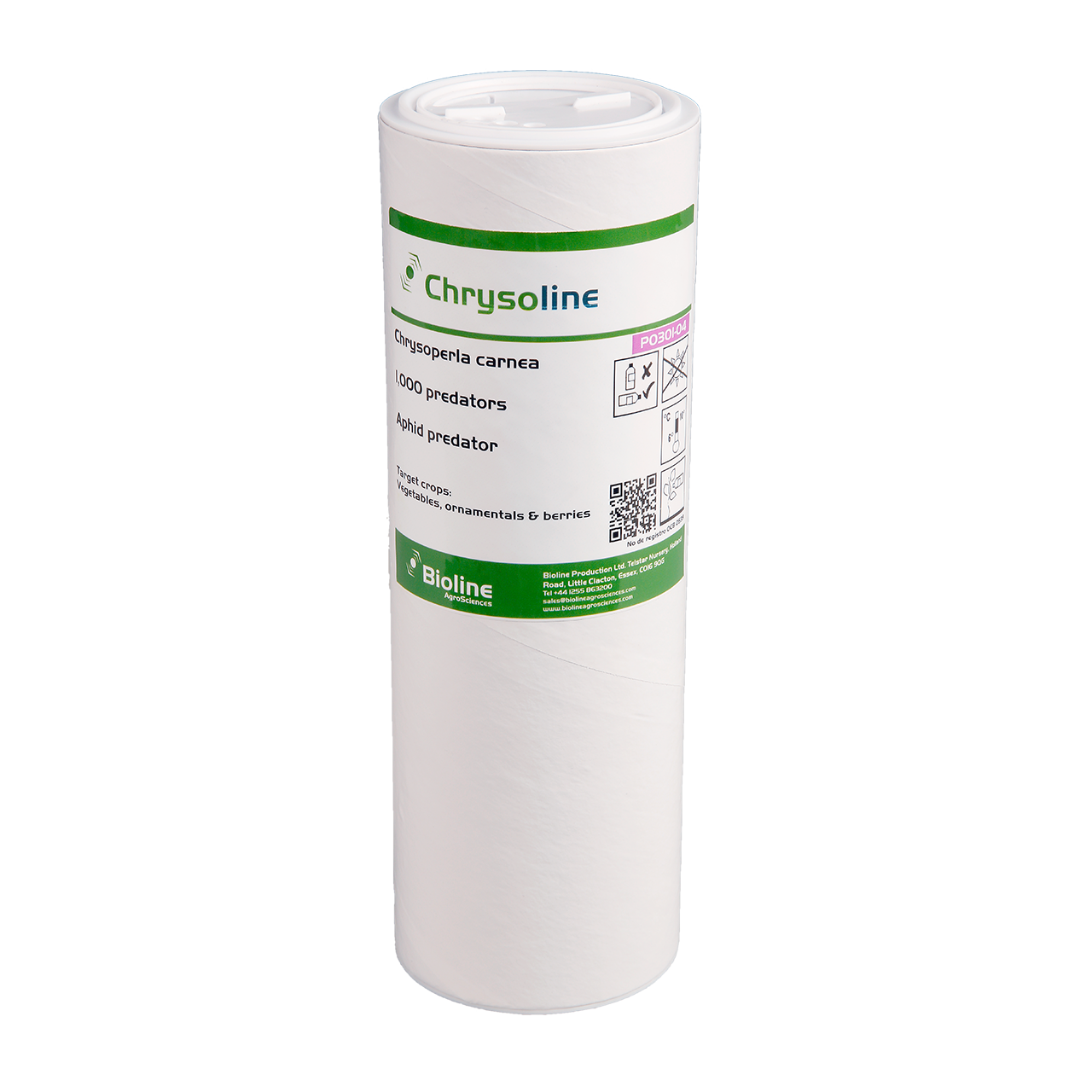Green peach aphid (Myzus persicae);
Black bean aphid (fabae);
Сotton aphid (Aphis gossypii);
Foxglove aphid (Aulacortum solani);
Large Potato Aphid (Macrosiphum euphorbiae);
Currant-lettuce aphid (Nasonovia ribisnigri (complex with posters);
Citrus Whiteflies larvae (Dialeurodes citri);
Western Flower Thrips (Frankliniella occidentalis);
Apple-and-thorn skeletonizer (Simaethis pariana (young eggs and caterpillars);
Mealybugs (Pseudococcidae);
Eggs of different kinds of moths.
Cucumber, tomato, sweet pepper, salad, fruit and berry crops, ornamental plants.
500 ml- bottle contains 500 individuals
1 litre – bottle contains 2500 individuals
Chrysoperla carnea, known as the common green lacewing. Adult green lacewings are pale green with long, threadlike antennae and glossy, golden, compound eyes. The delicate body is about 10 mm in size, wings spread to 30 mm. The green lacewing has 2 pairs of transparent spotted lacewings.
Chrysoperla carnea has the following instars:
The life span of this insect is 60 days. The green lacewing eggs are oval and secured to the plant by long slender stalks, they are pale green when first laid but become gray later. The female lays up to 1500 eggs during its life.
The larvae hatch in 3 to 6 days, eat voraciously and molt 3 times as they grow. They feed on not only aphids but also on many other types of insects such as eggs, larvae, and imago of mites, thrips, whiteflies, caterpillars. They can consume large numbers of prey and kill aphid colonies, but when food is scarce they turn into cannibal and eat each other. Larvae are crawling actively around in prey searching. They have a pair of pincer-like mandibles on their head with which they grasp their prey, sometimes lifting the victim off the leaf surface to prevent its escape.
The larvae inject enzymes into the victims’ bodies which digest the internal organs, after which they suck out the liquidated body fluids. After 2 to 3 weeks, the mature larvae secrete silk and build round, parchment-like cocoons in concealed positions on plants. From these, the adults emerge in 10 to 14 days later.
The life cycle length (under 4 weeks in summer conditions) is greatly influenced by the temperature and there may be several generations each year under favorable conditions. When the temperature drops to 10-12° C and daylight length decreases, the insects enter diapause.
Chrysoperla carnea can be released into the integrated protection systems of various vegetable crops, fruit, and ornamental plants to control various aphids. It can also attack several species of aphids, red spider mites, thrips, whitefly, the eggs of leafhoppers, leaf miners, psyllids, small moths, and caterpillars. The entomophage efficiency depends on the initial pest population size (in particular, various species of aphids). We recommend releasing this biological agent at an average or low density of the pest. It is used as part of the IPM program in the aphids control in combination with Aphidius colemani, Aphidius ervi, Aphelinus abdominalis, and Aphidoletes aphidimyza (depending on the pest species).
In greenhouse Chrysoperla carnea releases are carried out at the first appearance of the aphids colonies. The biggest effect is observed when using its larvae of the 2nd and 3rd instars. The predator-pest ratio varies from 1:5 to 1:50 depending on the crop and the pest number. But on the average release of the beneficial insect is carried out at the rate of 5 individuals /1m², 2-4 times a month. At a high density of the pest, the standard doses are increased per unit area. (for pest control in outbreaks 50 individuals / m² per week).
| Bioagent | Prevention | Doses of the application by a degree of infection | ||
|---|---|---|---|---|
| Small | Average | High | ||
| Chrysoperla carnea | 5 ind / m² | 7-10 ind / m² | 15-20 ind / m² | 15 ind / m² |
| Frequency of application | In a week | In a week | Weekly | Weekly |



Оставить комментарий